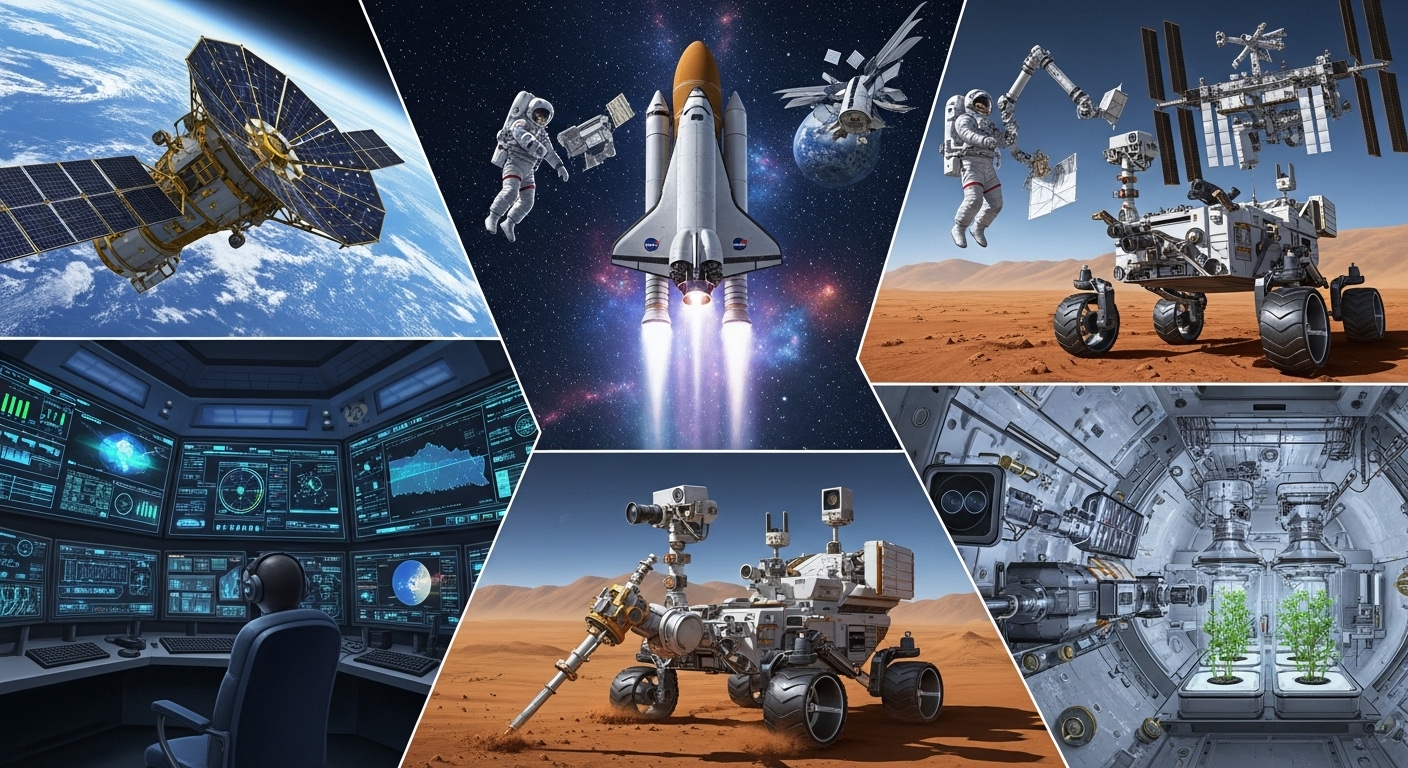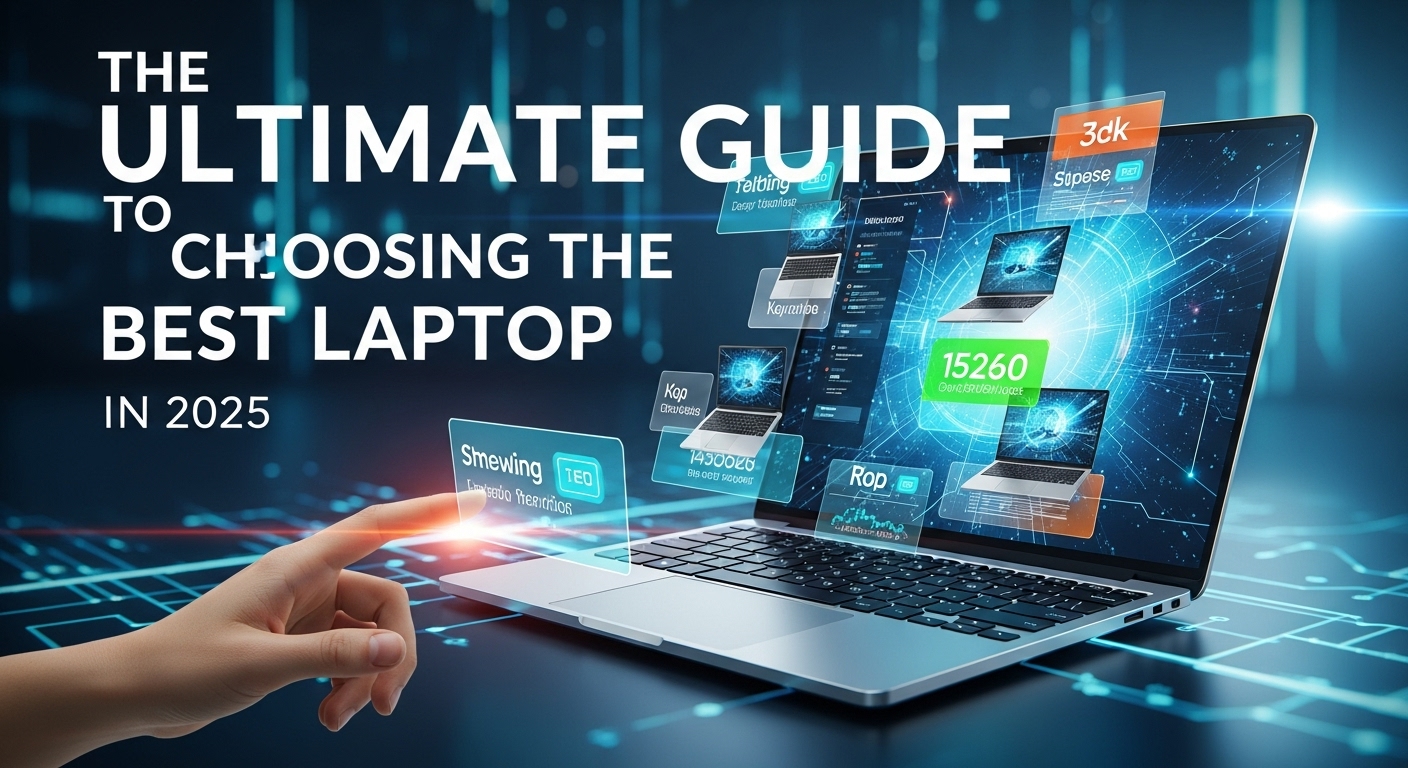Introduction
Space exploration has always stood at the intersection of imagination, courage, and technology. From the first satellites launched in the mid-twentieth century to today’s robotic explorers on Mars and beyond, technology has been the essential force behind every successful space mission. What makes space missions remarkable is not only the ambition of reaching the unknown but also the extraordinary technological innovations that make it possible. Technology is used in every stage of a mission, from planning and designing spacecraft to launching rockets, navigating space, maintaining communication, supporting astronauts, and studying data once missions return.
This blog explores how technology is applied in space missions across multiple domains. It shows how engineers, scientists, and mission controllers use cutting-edge innovations to overcome the extreme challenges of outer space. More importantly, it reveals how space technology not only advances our understanding of the cosmos but also influences everyday life on Earth.
The Role of Technology in Mission Planning
Space missions begin long before a rocket lifts off the ground. Planning requires advanced technologies that simulate conditions of space and anticipate potential problems. Computer modeling helps engineers design spacecraft capable of withstanding extreme conditions such as radiation, microgravity, and drastic temperature shifts. Artificial intelligence and machine learning are increasingly being used to predict risks and optimize mission strategies.
Mission planning also depends on supercomputers to process large volumes of data and run simulations of spacecraft trajectories. Without these calculations, ensuring that a probe or rover lands at its exact target would be nearly impossible. Technology provides the backbone for turning ambitious mission ideas into realistic, executable plans.
Rocket Technology and Launch Systems
One of the most iconic aspects of space missions is the rocket launch. Rockets represent the most visible use of technology in space exploration. Advanced propulsion systems allow rockets to break free from Earth’s gravity, carrying satellites, cargo, and astronauts into orbit.
Modern rockets use combinations of liquid and solid fuel, with sophisticated engines capable of delivering massive thrust. Innovations in rocket technology, such as reusable boosters, have significantly reduced the cost of space missions. Precision engineering ensures that rockets can launch payloads with incredible accuracy, and onboard computers monitor every aspect of the flight in real time.
The launch process itself relies on advanced technology, including automated systems for ignition, guidance, and safety checks. Even the countdown sequence is carefully managed by computers that verify every subsystem before liftoff. Without these technological safeguards, launches would be far riskier and less reliable.
Navigation and Guidance in Space
Once in space, navigation becomes a critical challenge. Unlike on Earth, there are no roads or landmarks to guide a spacecraft. Instead, technology enables spacecraft to navigate using a combination of onboard sensors, gyroscopes, star trackers, and computer algorithms.
Spacecraft rely heavily on precise calculations made by mission control on Earth, transmitted via deep space communication networks. However, as missions venture farther from Earth, real-time communication becomes impossible due to time delays. In such cases, autonomous navigation systems are crucial. For example, spacecraft exploring distant planets often make their own adjustments using onboard technology, reducing the need for direct human intervention.
Technologies like inertial navigation systems and star trackers ensure that spacecraft maintain their correct orientation and trajectory. These systems are so accurate that they can guide a spacecraft to land within meters of its target, even after traveling millions of kilometers.
Communication Technologies
Maintaining communication with spacecraft is one of the most essential uses of technology in space missions. Without communication systems, mission control would be blind to what happens beyond Earth. Communication technology involves the use of radio waves transmitted by antennas on spacecraft and received by ground stations.
Deep space missions rely on powerful antennas and highly sensitive receivers to send and receive signals across vast distances. The Deep Space Network, a system of large radio antennas located around the world, allows continuous communication with spacecraft as Earth rotates.
Advancements in communication technology have allowed for the transmission of high-resolution images, scientific data, and even live video from space. For astronauts aboard the International Space Station, communication technology enables voice calls, video chats, and data sharing with Earth, making long missions more manageable and connected.
Life Support Systems for Astronauts
When humans travel into space, technology ensures their survival in an environment that is otherwise lethal. Spacecraft and space stations are equipped with life support systems that provide breathable air, clean water, food, and waste management.
Oxygen is generated through chemical processes or water electrolysis, while carbon dioxide is removed using special filters. Water recycling systems capture and purify wastewater, ensuring a sustainable supply. Advanced food technology provides astronauts with nutritious and long-lasting meals suited for microgravity conditions.
Temperature control systems maintain habitable conditions inside spacecraft, protecting astronauts from the extreme heat and cold of space. Radiation shielding, pressure regulation, and protective spacesuits further ensure human safety during missions. Every element of human spaceflight depends on carefully designed technologies that replicate Earth-like conditions in space.
Robotics and Rovers
Robotic technology has expanded humanity’s ability to explore distant worlds without the risks of human presence. Rovers, landers, and robotic arms are among the most visible uses of robotics in space missions.
Rovers like those on Mars are equipped with cameras, drills, spectrometers, and other scientific tools to study the surface of the planet. These robotic explorers act as the eyes and hands of scientists on Earth, conducting experiments and sending back invaluable data. Robotic arms are also used on spacecraft and space stations to capture satellites, perform repairs, or assist astronauts during extravehicular activities.
Advancements in robotics allow these machines to operate autonomously, navigating terrain, avoiding obstacles, and performing tasks without constant input from Earth. As technology improves, future missions may see robotic explorers traveling even farther, possibly preparing habitats and resources for human missions to other planets.
Satellite Technology
Satellites are one of the most important applications of technology in space missions. They serve multiple purposes, from scientific observation to communication and navigation. Weather satellites monitor Earth’s atmosphere, providing forecasts and tracking natural disasters. Communication satellites enable global broadcasting, internet connectivity, and navigation services like GPS.
In scientific missions, satellites observe distant galaxies, measure cosmic radiation, and study the magnetic fields of planets. Earth-observing satellites provide crucial data on climate change, deforestation, and ocean health. Without satellites, much of modern life on Earth—from global positioning to international communication—would be impossible.
Scientific Instruments and Experiments
At the heart of every space mission is the pursuit of knowledge, and technology provides the instruments that make scientific discovery possible. Telescopes on spacecraft capture light from distant stars and galaxies, allowing astronomers to study the universe in unprecedented detail. Spectrometers analyze the chemical composition of planets, moons, and atmospheres. Seismometers measure geological activity on other celestial bodies.
On the International Space Station, astronauts conduct experiments in microgravity, studying how plants grow, how materials behave, and how human bodies adapt. These experiments depend on specially designed technology capable of functioning in the unique conditions of space.
Each instrument is a marvel of engineering, designed to be compact, durable, and precise enough to operate far beyond Earth’s protective atmosphere.
Artificial Intelligence in Space Missions
Artificial intelligence is playing a growing role in space missions. AI algorithms are used to process massive amounts of data sent back from spacecraft, helping scientists identify patterns and make discoveries faster.
AI also powers autonomous decision-making for spacecraft and rovers. For instance, rovers on Mars use AI to choose which rocks to study, avoiding constant communication delays with Earth. AI is also used in mission planning, optimizing flight paths, resource management, and risk assessment.
In the future, AI may become essential in crewed missions to deep space, where communication delays make real-time control from Earth impractical. Intelligent systems could manage life support, diagnose technical problems, and assist astronauts in decision-making.
Space Suits and Human Exploration
Space suits represent a specialized form of technology critical to human missions. These suits are essentially miniature spacecraft, providing life support, temperature regulation, and radiation protection for astronauts venturing outside their spacecraft.
Modern suits are equipped with communication systems, cooling mechanisms, and layers of protective material to withstand the vacuum of space. They allow astronauts to conduct repairs, collect samples, and explore planetary surfaces. Future space suits are being designed for missions to the Moon and Mars, offering greater flexibility, durability, and mobility in harsh environments.
Technology for Space Habitats
Long-duration missions require technologies that go beyond short-term survival. Space habitats, such as modules on the International Space Station, rely on advanced construction, energy generation, and resource recycling. Solar panels provide power, while shielding protects against radiation. Future missions to Mars or the Moon will require habitats capable of sustaining life for months or years, which involves developing advanced construction technologies like 3D printing using local materials.
Habitat technology also includes psychological support systems, as living in isolated environments for extended periods presents challenges for human mental health. Virtual reality, entertainment systems, and communication tools all play a role in maintaining astronaut well-being.
Earth Applications of Space Technology
An often-overlooked aspect of technology in space missions is its impact on life on Earth. Many technologies developed for space exploration find applications in daily life. Satellite communications support global positioning systems, weather forecasting, and international broadcasting. Medical technologies such as advanced imaging and telemedicine trace their origins to space innovations. Even everyday items like scratch-resistant lenses and memory foam were first developed for space missions.
This transfer of technology, often called spinoffs, shows how space exploration enriches not only scientific knowledge but also human life across the planet.
Challenges and Future Directions
Despite the remarkable achievements, using technology in space missions comes with challenges. Equipment must withstand extreme conditions, from radiation to micrometeorite impacts. Systems must be highly reliable, as repairs are often impossible. Developing and launching space technology is also costly, requiring international cooperation and long-term investment.
Looking ahead, future missions will push technology even further. Plans for human settlements on the Moon and Mars demand innovations in energy production, sustainable agriculture, and radiation protection. Exploration of outer planets and their moons will rely on more advanced robotics, AI, and propulsion systems. Technologies like nuclear propulsion or solar sails may one day enable humanity to reach distant stars.
Conclusion
Technology is the lifeline of space exploration. From mission planning to launch, navigation, communication, life support, robotics, and scientific discovery, every stage of a space mission is powered by innovation. As missions grow more ambitious, technology continues to evolve, breaking barriers once thought impossible.
The rise of AI, robotics, advanced communication, and sustainable life support systems demonstrates how space technology is shaping not only the future of exploration but also the future of humanity itself. Space missions remind us that human progress depends on the relentless pursuit of knowledge and the creative use of technology. As we continue to push further into the cosmos, technology will remain our most trusted companion, guiding us toward new horizons and deeper understanding of the universe.


